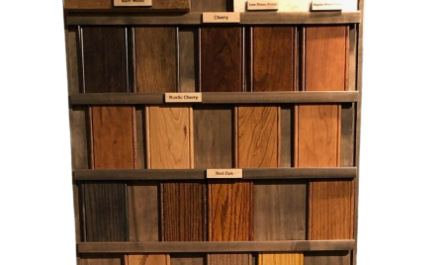Acknowledging that business remains a challenge, many discussed how they are hoping to move the needle with retailers and consumers
HIGH POINT — Premarket always comes and goes quickly, signaling the rapid approach of the spring market in the coming weeks.
While it appears to be a distant memory amid the onslaught of April market deadlines, premarket conversations regarding product and business strategies remain top of mind, particularly as they broach the subject of what to do about the ongoing slowdown in business.
Obviously no one has a crystal ball on how to magically make the consumer want to start buying again. But for many it’s about making things easier for their customers so they have the tools to handle things on the front lines.
Some are doing this with a mix of sharper price points and on-trend features built into the product mix. FD Home, for example, showcased several new bedrooms including models with features such as Bluetooth-controlled LED lighting in headboards and fabric on the drawer panels of case pieces. A number of its new sets are targeted to retail under $1,999 for a bed, dresser, mirror and nightstand, which allows the retailer to promote them for even less and still make a healthy margin.
“It’s still about trying to get the consumer in the store,” said FD Home President Steve York, noting that the company is trying to help dealers accomplish that with a mix of sharply priced product offering both style and innovation. “I feel that we have moved everything down in price point and we are doing it with support from our partner factory. It’s a vertically integrated company so we can do that together.”
Lifestyle Enterprise also showcased new style-driven looks in its bedroom segment including laminate sets featuring promotional pricing of $799 for a four-piece set up to $1,999 for veneered sets. Overseas factories that are hungry for business are helping to achieve the lower prices as a way to boost orders and production.

Pulaski and SLF also are looking to pass along cost savings they are seeing from Asian factories on to their customers.
“We have been able to sharpen our prices because the factories are sharpening,” said Page Wilson, president of Pulaski and SLF. “They need that business and we need that business.”
J. Scott Ostrander, president of case goods importer Austin Group, noted that some dealers are still not buying anything until their inventories come down.

However, he said his company is having success with its container-direct model, along with its project-driven business that produces private label goods for large volume accounts. At premarket, the company had about two dozen new bedrooms including several Austin described as special projects for certain retailers. New bedrooms the company showed at market are targeted to retail from $999 to $1,699 for a bed, dresser and mirror.
“It’s not a shotgun approach because we do concentrate on the styles and trends,” he noted of the introductions shown at premarket. He added that even if only a half-dozen or so make the cut, he will be pleased because of the volume they will represent.
Others said they are making investments in product and inventory.

Examples include luxury resource Sarreid, which is doubling its dollar commitment to inventory by having a deeper mix of the SKUs in stock, including in bestsellers in different leathers and finishes. The company already has a significant amount of product in its North Carolina warehouse, but is expecting about eight months of inventory that is on the water now or shipping soon to arrive by late April to early May.
“So much of our business is the design trade,” said President and CEO Brad Cates. “If we don’t have it in stock, they will move on to the next resource.”
The company is also adding some 200 new SKUs to its mix this market, which Cates described as very logical line extensions.
“As an importer, it’s a pretty significant commitment,” he said of the new product and commitment to inventory. “For a long time, we’ve been wide and shallow, now its time to go deeper because we know what works. … It’s a very organized gamble. The interior designer and retail customer, they want it now and we just have to be more responsive to that demand. This is definitely a response to where the business is.”
Vaughan-Bassett’s new Custom Express program includes custom bedrooms that ship in 72 hours, a strategy that turns the domestic model on its head by making domestically made custom case goods available in record time. The program also addresses demand in its solid wood Artisan & Post line, which represents nearly half its volume, said Doug Bassett, president.
“More and more we’re a solid wood provider,” he said, adding that the Custom Express is made with solid white oak and features groups with three different beds available in five finishes and six fabric options for upholstered headboards.

He added that the six room scenes shown at premarket will be in stock by mid-April, which ultimately will represent an estimated $4 million to $5 million investment in inventory over time. While business was slow earlier in the year for many, he expects that demand will increase as the year progresses, warranting the investment in a solid wood product line that is higher than most of its veneered bedroom sets.
“Business is picking up a little,” Bassett said, adding that a lot will depend on interest rates, which have a huge impact on housing sales, a big driver of the business. “Until interest rates come down and housing goes up, we’re in a tough position. Right now it’s about taking market share, and with this we have something to do that.”
Others also are keeping an eye on interest rates, noting it will help turn the tables on home sales and demand for furniture. For now they are concentrating on new looks and styles they believe will help drive business, despite some noting that they still haven’t gotten orders for product from last market.
“Retailers who are promoting are doing business,” one industry source noted, adding that consumer confidence also needs to improve to drive more traffic.
Kelly Hahn, chief operating officer and chief creative officer at case goods resource Urban Design Collective, said that the company aims to make things simple for buyers, allowing them to pick pieces from different collections without committing to the entire mix of a single collection, for example. It also takes a style-driven approach without straying from the middle of the market.
“We don’t say if you buy, you have to buy the whole thing,” he said of its collections. “We definitely mix and match and take chances. Nobody is coming to Urban Design Collective to see commodity product. Yes, price is going to move the needle, but we’ve always been unapologetically in the middle with an extreme amount of design. We’ve always been design focused at a good value. That is why we have never had to swim downstream to find business.”
“There’s always opportunity — it’s not all doom and gloom,” he added of the current business environment.
While others also are facing the challenges of lower demand and angst among retailers and consumers, they too believe there is still open to buy in the marketplace, which is what continues driving people to markets whether Las Vegas, premarket or High Point. Retailers, they note, still have to plan for the future, even if it’s six to eight months away.
“Business is challenging at retail,” said Steve Pilgrim, president of Bernhardt Furniture’s Residential Division. “But we have to excite the consumer. If we don’t bring fresh product to the consumer, it’s going to continue to be challenging.”

For some, another key ingredient is being out in the market with in-person visits to key retailers. Rusty Morris, vice president of sales and marketing at case goods resource American Woodcrafters, said that he and company President Chuck Foster have increased their presence on the road of late, advocating for the company’s product line.
“I want our name to be in the conversation and in their mind,” he said of its customer base and the opportunity to promote products across its price points, including at the upper end of its line.
“The middle is not where they are seeing as big a return on investment as in the past,” Morris said, noting that it is testing bedrooms in the $3,999 to $5,999 range compared to more typical $1,799 to $1,999 retails for a bed, dresser, mirror and nightstand.
Youth furniture resource My Home Furnishings is looking to grow its business in a segment that many resources have abandoned in the past five years or more. Gene Clark, senior managing partner, also spends time on the road promoting the line and has seen results. Shipments, he said, were up the first two months of the year, largely in response to the 23 new accounts it’s landed in the past year and the efforts of its sales team, which includes nine new reps added last fall, for a total of 13 by premarket.
“I think this fall is where you are going to find where you are at,” he said, acknowledging the ongoing challenges at retail. “We’re finding pockets of growth, but it’s not across the board. People will start to feel more comfortable when the Fed starts to lower the rates.”




